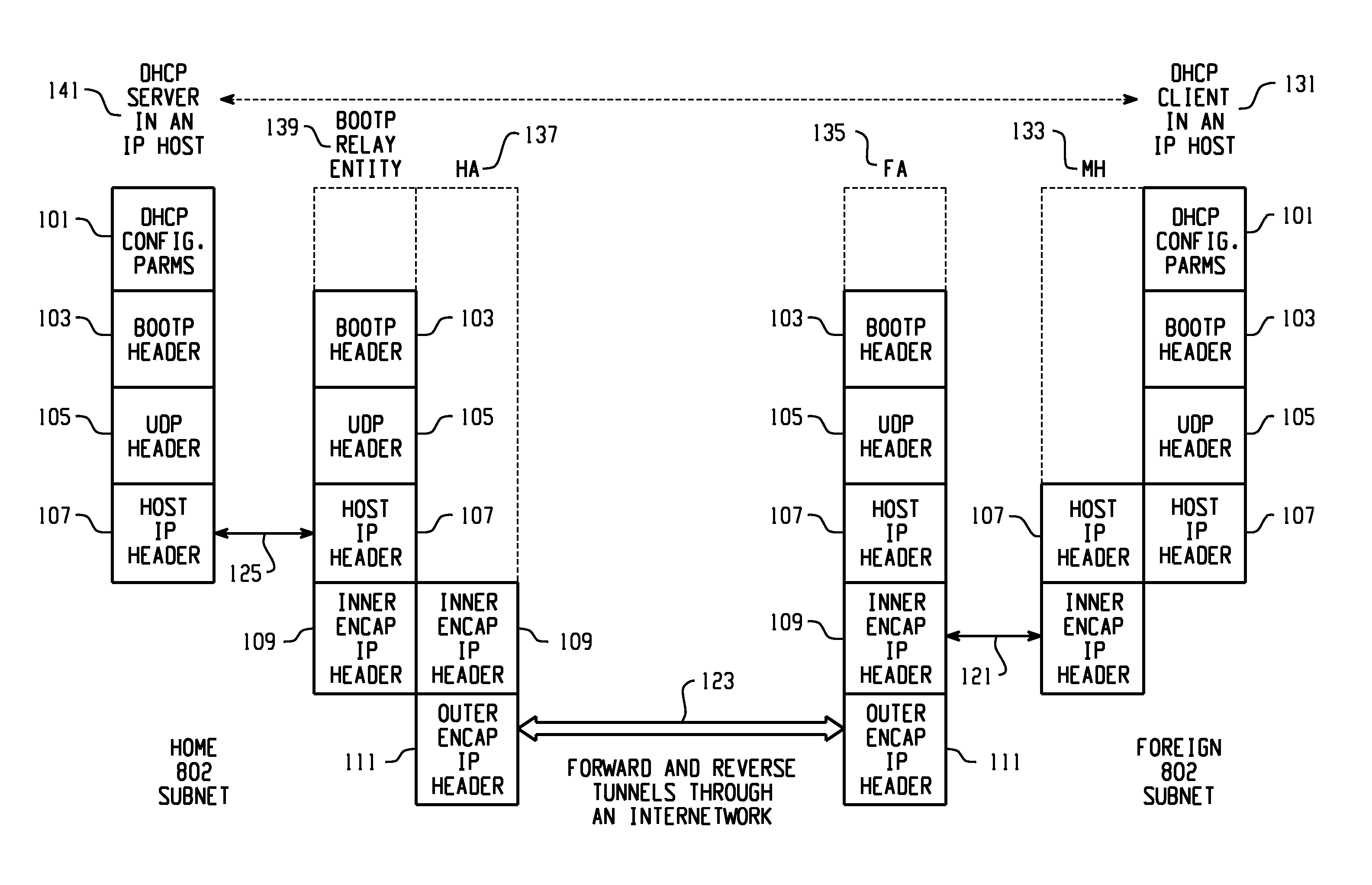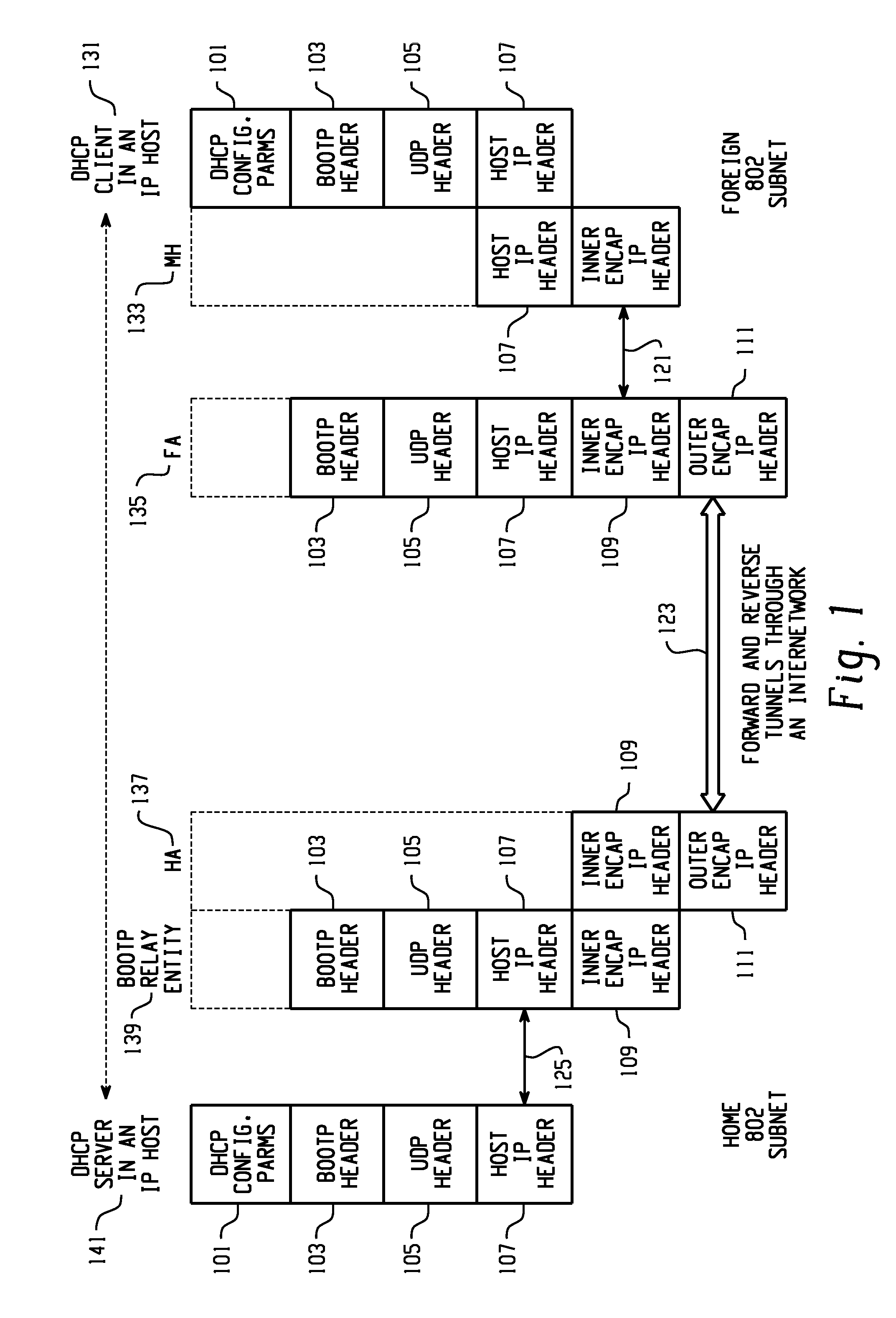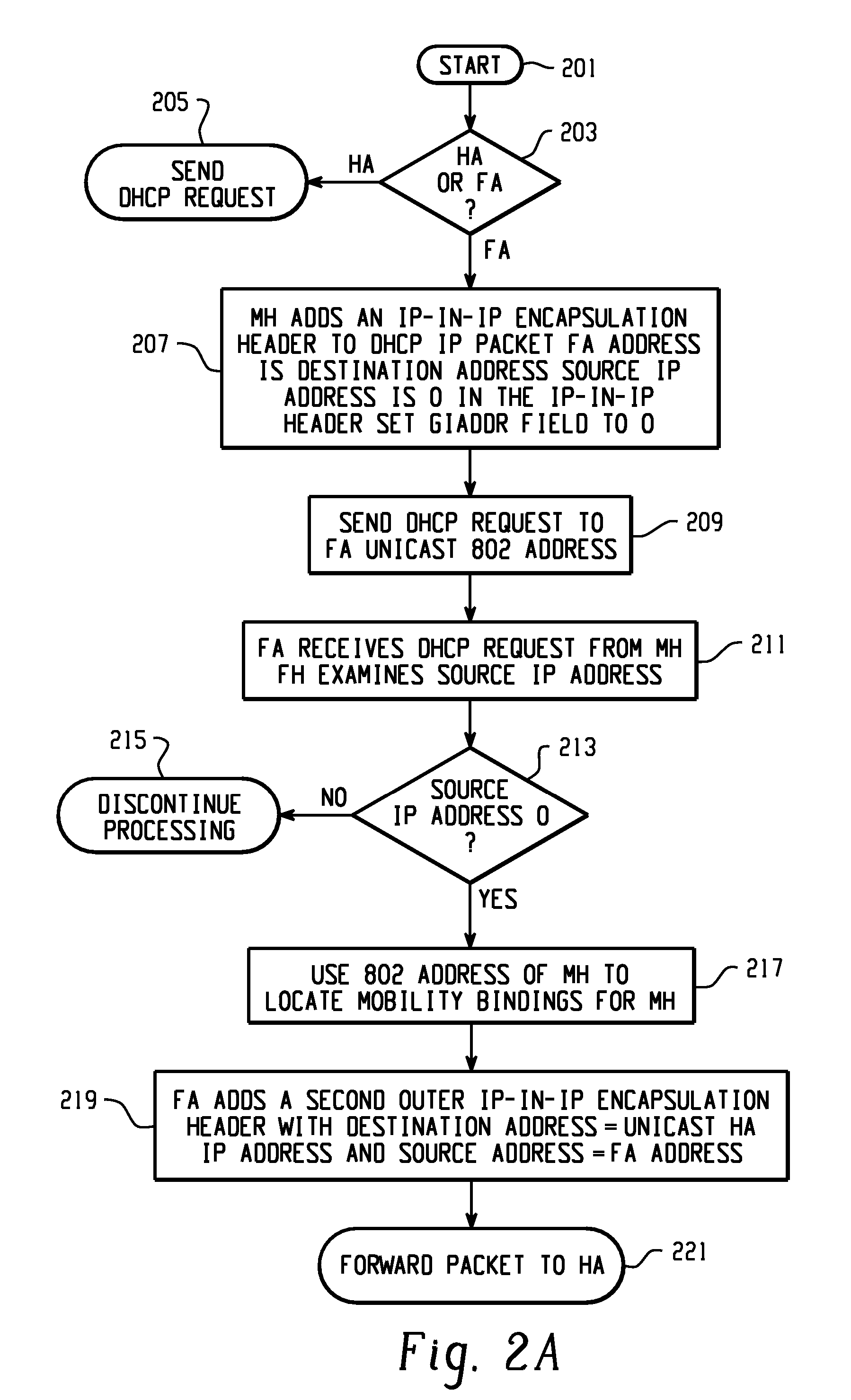DHCP over mobile IP
a mobile ip and dhcp technology, applied in the field of dhcp over mobile ip, can solve the problems of inability to allocate the address permanently, undeliverable datagrams destined to the device, and immense system administration work
- Summary
- Abstract
- Description
- Claims
- Application Information
AI Technical Summary
Benefits of technology
Problems solved by technology
Method used
Image
Examples
Embodiment Construction
[0021] A description of an example embodiment illustrating the best mode is described herein. In the drawings, like reference numbers refer to like components.
[0022] Referring now in particular to FIG. 1, there is shown an example of how encapsulation headers are added and removed at each entity on the path between a DHCP client 131 and a DHCP server 141 when the client makes a request from a foreign network. A more detailed description is provided in FIG. 2. FIG. 1 assumes that the mobile host is connecting to a foreign subnet and the DHCP server 141 and BootP relay entity 139 reside on a home 802 subnet. Portions of the packet that are not used by an entity are shown in dashed lines. For example the mobile host may use proxy mobile host software which only uses the DHCP request Host IP header 107 in generating the encapsulated IP packet while the foreign agent will look at the BOOTP header 103 to obtain the mobile host's 802 address.
[0023] The DHCP client in an IP host 131 withi...
PUM
 Login to View More
Login to View More Abstract
Description
Claims
Application Information
 Login to View More
Login to View More - R&D
- Intellectual Property
- Life Sciences
- Materials
- Tech Scout
- Unparalleled Data Quality
- Higher Quality Content
- 60% Fewer Hallucinations
Browse by: Latest US Patents, China's latest patents, Technical Efficacy Thesaurus, Application Domain, Technology Topic, Popular Technical Reports.
© 2025 PatSnap. All rights reserved.Legal|Privacy policy|Modern Slavery Act Transparency Statement|Sitemap|About US| Contact US: help@patsnap.com



